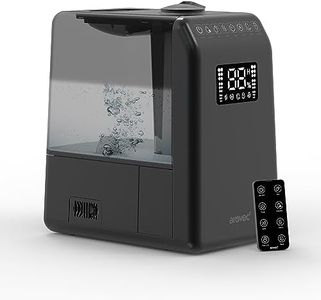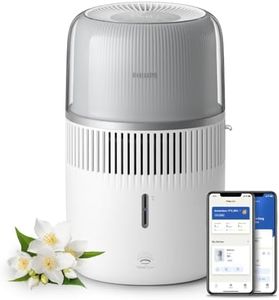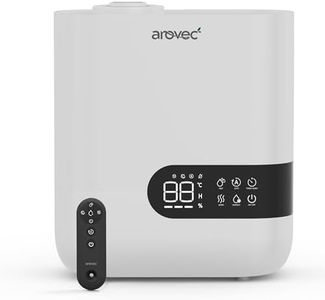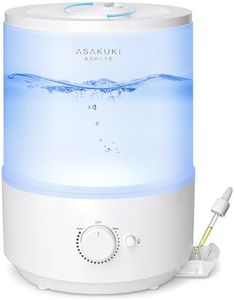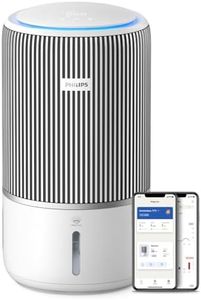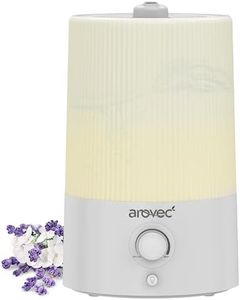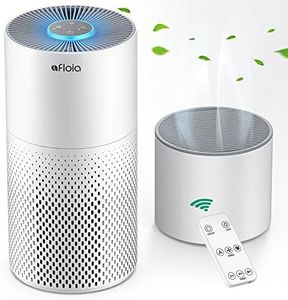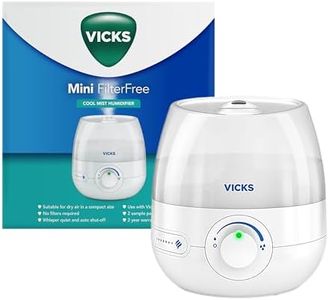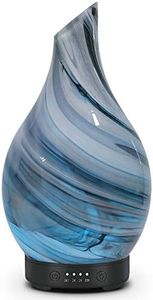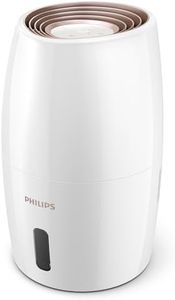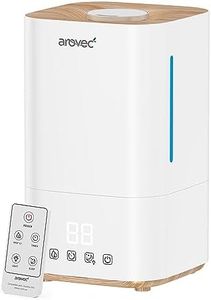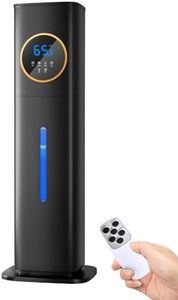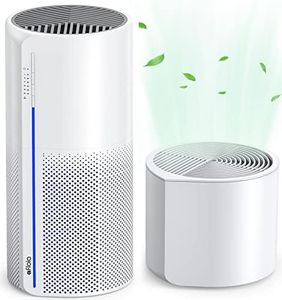We Use CookiesWe use cookies to enhance the security, performance,
functionality and for analytical and promotional activities. By continuing to browse this site you
are agreeing to our privacy policy
10 Best Humidifier
From leading brands and best sellers available on the web.Buying Guide for the Best Humidifier
Choosing a humidifier can truly improve your comfort at home, especially during dry seasons or in air-conditioned rooms. The goal is to find one that matches your room size, lifestyle, and ease of maintenance. Understanding the main features helps you avoid buying something too powerful or insufficient for your needs. Focusing on the right specs ensures you’ll get balanced humidity without much hassle.Room Coverage (Square Footage)Room coverage tells you the size of the area the humidifier can effectively add moisture to, usually measured in square feet. This is crucial because choosing a model that's too small for your space will mean it won’t make a noticeable difference, while an overly large unit may over-humidify or consume unnecessary power. Small units typically cover bedrooms or offices (up to 400 sq. ft.), mid-sized ones suit living rooms (400–800 sq. ft.), and large humidifiers can handle big areas (over 800 sq. ft.). To choose, measure your main room and match it to the right category—larger isn’t always better; fit the machine to your space.
Tank CapacityTank capacity is how much water the humidifier can hold at once—this affects how long the device can run before needing a refill. Lower capacities (1 liter or less) might need filling every few hours and are best for desks or small bedrooms, mid-sized tanks (1–3 liters) can run overnight for medium rooms, while large tanks (3 liters or more) can go for a whole day or more, serving larger rooms without interruption. Pick a capacity based on both your willingness to refill the tank and the desired run time.
Type (Ultrasonic, Evaporative, Warm Mist)The type refers to the method the humidifier uses to add moisture to the air. Ultrasonic models use sound waves and work quietly, making them great for bedrooms. Evaporative ones use a fan and filter, which can be a bit louder but don’t leave white dust; they’re good for general home use. Warm mist models boil water to create steam, useful for extra warmth or if you want to reduce germs, but they use more electricity and aren’t ideal around kids or pets. Your choice depends on whether you need silent operation, easy cleaning, safety for children, or specific benefits like germ reduction.
Noise LevelNoise level is how much sound the humidifier makes when running. Some people are sensitive to noise, especially if it's used in a bedroom. Low-noise models (usually ultrasonic) produce gentle background sound, while others (like some evaporative models) can be more noticeable. If you’re planning to sleep near your humidifier or want it in a quiet environment, pay attention to this feature—‘whisper quiet’ or decibel ratings can guide you.
Ease of CleaningHumidifiers need regular cleaning to prevent bacteria and mold. The ease of cleaning means how simple it is to take the humidifier apart and wash its internal parts. Models with wide tank openings, fewer nooks and crannies, and dishwasher-safe parts save you time and effort. If you’re not keen on frequent, tricky cleaning sessions, look for straightforward designs that make maintenance easy.
Run TimeRun time indicates how many hours the humidifier can operate continuously on one tank of water, usually linked to tank size and output setting. Short run times mean more frequent refills; long run times (8–24 hours or more) mean you can set it and forget it, often overnight. Choose a model with enough run time to fit your daily habits—if you want overnight moisture, aim for at least 8 hours of continuous operation.
Humidity Control/SettingsHumidity control describes how precisely you can adjust the moisture level. Basic humidifiers let you choose low, medium, or high, while more advanced ones have digital controls or even a built-in humidistat that keeps humidity at your chosen level. More control helps you avoid over-humidifying (which can cause condensation or mold), especially in changing climates. If you want to set and maintain a specific comfort level, pick a unit with adjustable settings or automatic control.
